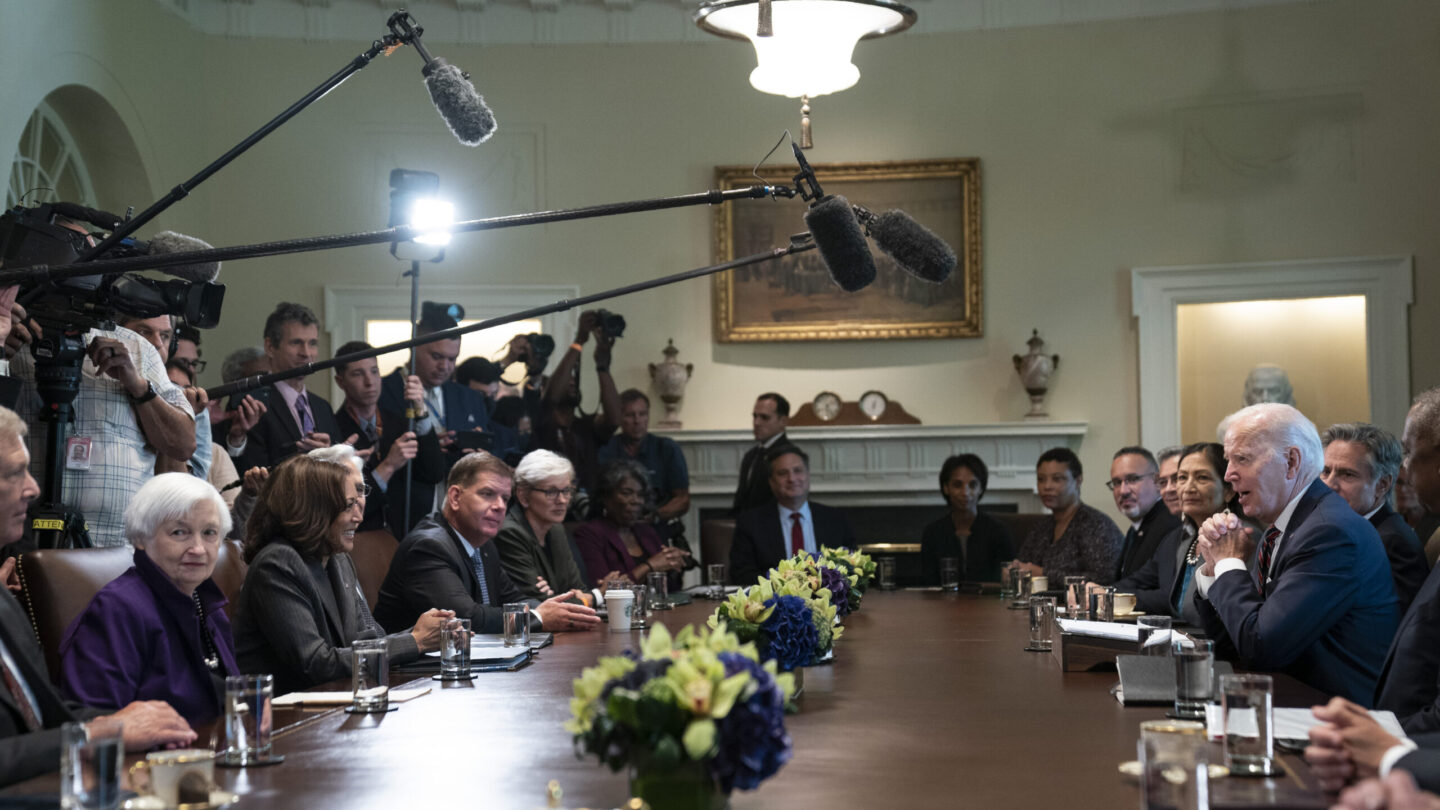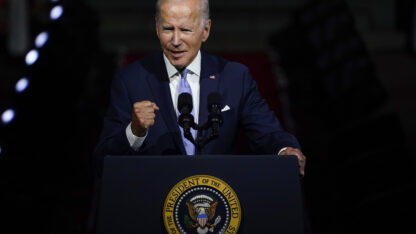Joe Biden — a president who wants to move past fossil fuels — is rushing to increase oil supplies ahead of next month’s midterm elections.
Administration officials have teased that additional oil can be released from the U.S. strategic reserve as part of a response to recent production cuts announced by nations in OPEC+. The prospective loss of 2 million barrels a day — 2% of global supply — has had the White House saying that Saudi Arabia sided with Russian President Vladimir Putin and pledging that there will be consequences for supply cuts that could prop up energy prices.
Multiple White House officials say that the U.S. strategic reserve contains roughly 400 million barrels of oil, and Biden could order an additional release as early as Wednesday, when chief of staff Ron Klain said he is set to deliver remarks on his administration’s efforts to lower gas prices. Still, reserves are at their lowest levels since 1984 after Biden in March announced the release of 180 million barrels over six months. The officials spoke on the condition of anonymity because they were not authorized to discuss plans publicly ahead of a White House announcement.
Bloomberg News reported Monday that the administration is moving toward an additional release of 10 million to 15 million barrels. That range would not cover even one full day’s use of oil in the U.S., according to the Energy Information Administration.
Biden has pledged to speak about his plans to reduce gasoline prices this week. White House press secretary Karine Jean-Pierre declined to say what policies Biden will discuss, telling reporters at Tuesday’s briefing, “I will let the president speak for himself.”
Jared Bernstein, a member of the White House Council of Economic Advisers, said that a past release of oil from the U.S. strategic reserve contributed to a decline in prices at the pump this summer. That decline ended last month as prices began to rise again, though they’ve eased somewhat in the past week.
Bernstein suggested to Fox News Sunday that the reserve is large enough that the White House could tap it again.
“There are still 400 million barrels of oil in the strategic reserve — it is more than half full,” Bernstein said, adding that Biden had not yet made a final decision on releasing more barrels.
Biden still faces political headwinds because of gas prices. AAA reports that gas is averaging $3.87 a gallon, up from a month ago when falling prices at the pump suggested that the president and his fellow Democrats were faring better in surveys.
An analysis Monday by ClearView Energy Partners, an independent energy research firm based in Washington, D.C., suggested that two states that could decide control of the evenly split Senate — Nevada and Pennsylvania — are sensitive to energy prices. The analysis noted that gas prices over the past month rose above the national average in 18 states, which are home to 29 potentially “at risk” House seats.
Even if voters want cheaper gasoline, expected gains in supply are not materializing because of a weaker global economy. The U.S. government last week revised downward its forecasts, saying that domestic firms would produce 270,000 fewer barrels a day in 2023 than was forecast in September. Global production would be 600,000 barrels a day lower than forecast in September.
The hard math for Biden is that oil production has yet to return to its pre-pandemic level of roughly 13 million barrels a day. It’s about a million barrels a day shy of that level. The oil industry would like the administration to open up federal lands for drilling, approve pipeline construction and reverse its recent changes to corporate taxes.
But Biden has resisted the policies favored by U.S. oil producers. Instead, he’s sought to reduce prices by releasing oil from the U.S. reserve, shaming oil companies for their profits and calling on greater production from countries in OPEC-plus that have different geopolitical interests, said Frank Macchiarola, senior vice president of policy, economics and regulatory affairs at the American Petroleum Institute.
“If they continue to offer the same old so-called solutions, they’ll continue to get the same old results,” Macchiarola said.
Because fossil fuels lead to carbon emissions, Biden has sought to move away from them entirely with a commitment to zero emissions by 2050. When discussing that commitment nearly a year ago after the G-20 leading rich and developing nations met in Rome, the president said he still wanted to also lower gas prices because at “$3.35 a gallon, it has profound impact on working-class families just to get back and forth to work.”
Since Biden spoke of the pain of gas at $3.35 a gallon and his hopes to reduce costs, the price has risen another 15.5%.








